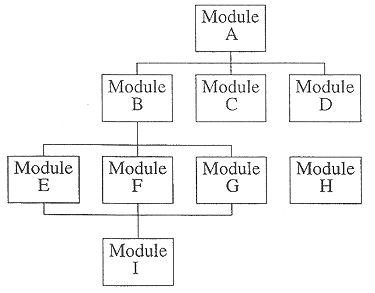| (a) | What is software design? | [2] |
| The translation of
customer requirements into design/software representations.
|
||
| (b) | One of the many design concepts is
"control hierarchy:, i.e. the representation of the organization of modules or
components of a program.
|
[8] |
(i) Firstly, define each of the following
terms as used in the representation of structure :
|
[6] | |
| (ii) Next, illustrate your understanding of
each term by making use of the diagram below to give an example of the use of each of the
six terms. (Hint: for example, what is the fan-in for module B.)
|
[6] | |
(i)
(ii) There are lots of possible answers for each part, but one example of each is :
|
||
| (c) | Some of the factors that can be taken into
consideration when choosing a programming language to develop a program are as follows: General application area Knowledge of staff Algorithmic and computational complexity Cost of acquiring/using the language Describe each of these factors in your own words. Based on your understanding, also comment on which of these factors would you treat as the most significant consideration. Justify your opinion. |
[6] |
| Any suitable solutions accepted. |
